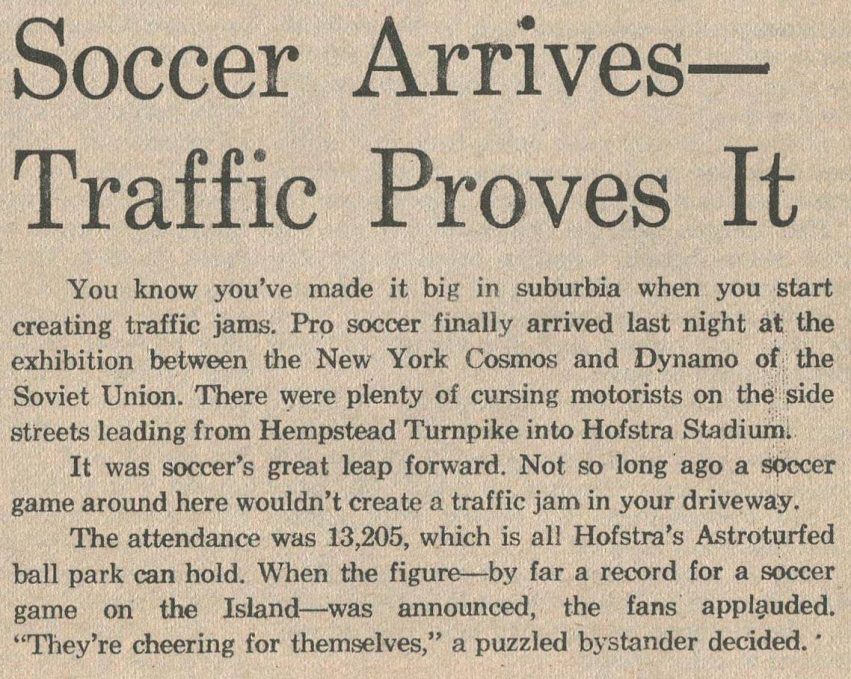Soccer Arrives—Or DID It?
Back in August 1972, a local newspaper headline triumphantly declared that “Soccer Arrives—Traffic Proves It.” The occasion was an exhibition match between the New York Cosmos and Dynamo Moscow at Hofstra Stadium, where a crowd of 13,205 fans was enough to cause traffic jams on Hempstead Turnpike. To the writer of that era, such congestion was proof that soccer had finally found its place in suburban America. Over fifty years later, the traffic has moved online—but the question remains: has soccer truly “arrived” in the United States?
Despite the sport’s massive global popularity, soccer in America still lags behind its counterparts in attendance, television ratings, and cultural presence. Major League Soccer (MLS), founded in 1996, has made significant progress—averaging around 22,000 fans per match in 2024, with Inter Miami drawing crowds nearing 30,000 thanks to Lionel Messi. Yet, these figures pale in comparison to the NFL’s average of over 67,000 attendees per game, or even Major League Baseball’s 29,000. For a sport that’s been “arriving” for over half a century, the parking lots aren’t quite full yet.
Television ratings tell a similar story. The 2024 MLS Cup Final drew roughly 1.4 million viewers nationwide—a respectable number but not really, but far behind the NFL’s Super Bowl audience of more than 115 million or the NBA Finals, which routinely attract over 10 million. Even international soccer competitions, such as the FIFA World Cup, see spikes in U.S. interest only when the national team advances. When the U.S. men’s team exited early in Qatar 2022, viewership dropped sharply after the group stage. In essence, American enthusiasm for soccer still rises and falls with novelty and narrative rather than sustained passion.
That said, the grassroots level tells a more optimistic story. Soccer is now the most-played youth sport in the U.S., surpassing baseball and basketball in participation. Yet this enthusiasm STILL doesn’t consistently translate into lifelong fandom or professional-level spectatorship. Many kids play the game—but when they grow up, they tend to watch football or basketball instead. This disconnect between playing and watching has long been the sport’s American paradox. I don’t think it will ever change. Even with the hopes and dreams the World Cup will bring.
Financially, soccer’s footprint is expanding but remains modest compared to the “big four” leagues. MLS franchise valuations have risen sharply—Los Angeles FC, for example, is now worth over $1 billion—but total league revenue still trails the NHL by billions. Even with growing investments, media rights deals, and global star power, soccer in the U.S. feels more like an import luxury item than a homegrown institution.
So perhaps that 1972 writer was only half right. (I being nice) Soccer had arrived—in traffic jams, in curiosity, in moments of imported glamour. But in 2025, even with international icons and billion-dollar franchises, America’s relationship with the world’s game still feels like it’s perpetually en route. Like I’ve been saying for 25 years on the podcast- American Soccer is always stuck on the ground floor. The roads are smoother, the stadiums larger, and the crowds slightly louder—but soccer’s “great leap forward” remains, STILL, a work in progress.


Comments are closed.